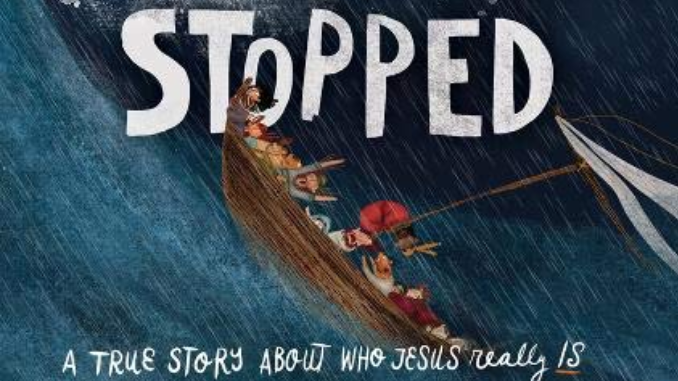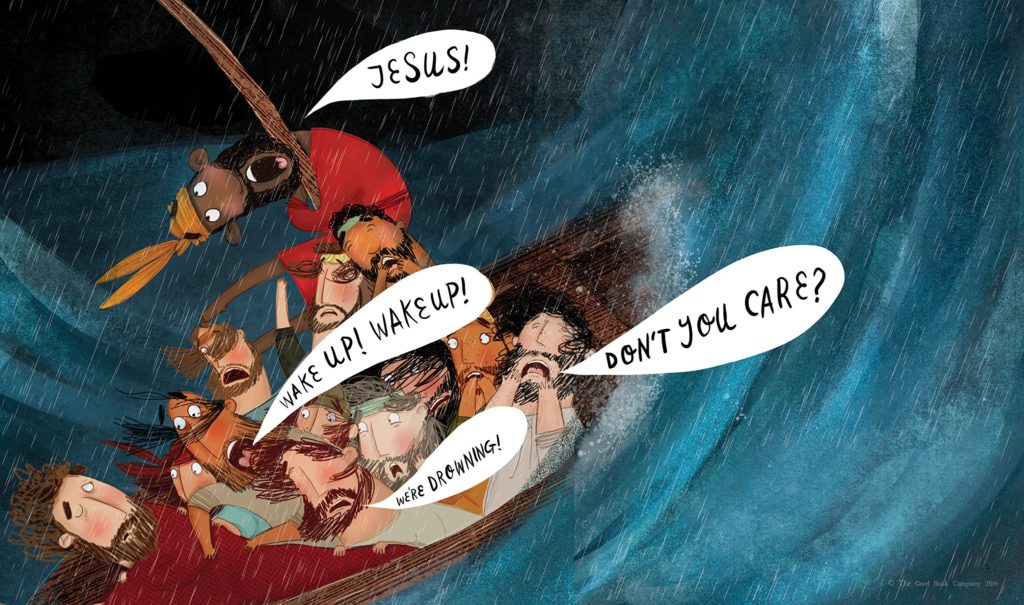
Also by this author: Jesus and the Lions' Den: A True Story about How Daniel Points Us to Jesus, The One O'Clock Miracle, The Christmas Promise, All about Christmas: Over 100 Amazing Facts behind the Christmas Story, Queen Elizabeth II: The Queen Who Choose To Serve (Do Great Things For God), Jesus Moments: David: Finding Jesus in the Story of David, Jesus Moments: David, Esther: Finding Jesus in the Story of Esther, Jesus and the Very Big Surprise: A True Story about Jesus, His Return, and How to Be Ready, Goodbye to Goodbyes: A True Story About Jesus, Lazarus, and an Empty Tomb, The Friend Who Forgives: A True Story About How Peter Failed and Jesus Forgave, God's Very Good Idea: A True Story of God's Delightfully Different Family, The Garden, the Curtain and the Cross, The Prisoners, the Earthquake, and the Midnight Song, The Garden, the Curtain, and the Cross Board Book
Series: Tales that Tell the Truth #3
on February 1, 2016
Genres: Children's, Bible Stories
Buy on Amazon
Goodreads

Third in the 'Tales that Tell the Truth' series comes The Storm that Stopped! Based on the account of Jesus calming the storm from Mark chapter 4, this dramatic storybook will teach children about who Jesus really is, as they witness his power over nature.
Stunningly illustrated by Catalina Echeverri, author and illustrator of several bestselling children's books as well as the first two storybooks from the 'Tales that Tell the Truth' series: The Christmas Promise and The One O'Clock Miracle. Written by Alison Mitchell, author of The Christmas Promise.
Children’s books are everywhere.
Children’s retellings of Bible stories are everywhere.
And the quality…well…in my experience, the quality ranges.
How are we supposed to sort through it all?
Early on, with my kids, I developed some guidelines for choosing a children’s Bible storybook.
- Is the story biblically accurate?
- Is the story relationally applicable?
- Does the story’s language/vocabulary fit the intended audience?
- Are the illustrations diverse?
And whenever somebody asks me for a practical example of those four guidelines, I inevitably point them toward Tales that Tell the Truth. There are currently ten books in the series (the latest upcoming June 2020) along with a variety of supplemental materials like coloring books that accompany each volume. The series has a variety of authors with illustrator Catalina Echeverri providing a cohesive stylistic design.
The Storm that Stopped | Tales that Tell the Truth
The Storm that Stopped takes the account of Jesus calming the waves to highlight how this true story shows who Jesus really is. The first few panels set up the story for us, showing us how Jesus had been the boat to teach. After this, he tells the disciples to sail across the sea of Galilee to the other side. He’s tired from all that preaching—and as a pastor, I’ll attest to that—and takes a nap in the boat. Except…something big is going to happen.
A storm rages, while Jesus sleeps. And the disciples panic. Echeverri humorously draws two panels illustrating just that: a wind’o’meter, wave’o’meter, sink’o’meter, and panic’o’meter. But when Jesus wakes up, he says just three words: Quiet. Be still.
And the wind and the waves obey. It’s a clear and obvious sign that Jesus has control over the natural elements. It’s a clear and obvious sign that Jesus is more than just human. A clear and obvious sign that he is God. The last few panels of the book draw out this point, though in a rather abrupt and jagged way.

While still a good book with a good message, the tone and wording in this book just doesn’t rise to the extraordinary heights of the rest of this series. It’s just missing something. I think that it comes from the fact that the lesson is implicit to the narrative. We’re never told that the disciples come away thinking of Jesus as God as a result of this. (In fact, it’s not until much later that Peter declares Jesus the Messiah.) The story ends with the question: Who is this? Even the wind and the waves obey him.
It’s left open-ended in Scripture. By closing it so abruptly in the storybook, the reader loses some of the wonder. There was some needed eloquence and explanation and majesty and it all ends a bit too abruptly—just like the wind and the waves, so maybe that’s the point.
Echeverri’s illustrations continue to amaze. The early panels of Jesus teaching parables and the way in which the crowd is visualized is simple, yet profound. This one just didn’t quite stick the landing, not as much as the others. But if I hadn’t read the other books in the series at the same time of this one, would I have noticed? I’m not sure. So I chalk this one up to excellence bias. Tales that Tell the Truth have proven themselves to be so good in the past that the tiniest of flaws seems important by comparison.



